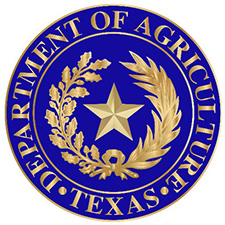(AG Insider) Toward the beginning of the COVID-19 pandemic, the prospect of increased food insecurity was quickly becoming a reality. For Kaia Shivers, an assistant clinical professor of liberal studies with New York University, thinking about how this food insecurity would look in Black communities compelled her to start working on the Black Farmers Index, a nonprofit listing of Black farmers who work directly with consumers.
Shivers, the founder and president of the Black Farmers Index nonprofit, enlisted family and friends to help her comb through documents and research Black farms to include in her list. What started for Shivers as a list of 150 farms, has grown to more than 900.
Juneteenth — the annual recognition of June 19, 1865, when Union soldiers reached the last enslaved Black people who hadn’t yet learned of the Emancipation Proclamation, freeing them from chattel slavery — is as good a time as any to discuss and highlight the past and present work and contributions of Black farmers, and Black people’s connection to the land they worked, that was also subsequently taken from them
To discuss the connection between Juneteenth and Black farming, Shivers, who is also founder and editor-in-chief of the subscription-based storytelling site Ark Republic, is joined here by Jillian Hishaw. Hishaw is an attorney, the author of “Systematic Land Theft,” and the founding director of Family Agriculture Resource Management Services (F.A.R.M.S.), a nonprofit that provides legal and technical assistance to rural, small farmers of color.
Q: The Black Farmers Index became a formal nonprofit organization in July 2020. What compelled you to put a resource like this together?
Shivers: For well over a decade, I’d been following the challenges of Black farmers and always wanted to do something to help that sector of the agriculture industry that had been neglected and intentionally undermined, but I never had an answer.
Black Farmers Index emerged as an idea to address the food insecurity that I thought would occur in the U.S. as a result of the pandemic. I thought about what that grave food insecurity would look like in Black communities who are at the bottom of the wealth gap in the U.S. I am from these communities. My family lives in these communities, so it caused grave concern. When reports of farmers being forced to dump milk and leave their crops rotting while food banks were seeing thousands of people lined up to feed their families, the idea of pairing communities with Black farmers seemed like a great idea. There were a handful of articles on Black farmers with, at most, 20 farms on them. When I saw the dearth of information, the idea struck me to create an online directory. The response to find out about farms became an explosion. I received calls from chefs, food justice organizations and interested supporters. Plus, more farms called giving me information, and even others corrected entries of farms.
Hishaw: The Black Farmers Index is an essential part of our F.A.R.M.S. resource list now we often refer the public to the index if they are requesting information about how to locate a Black farmer to purchase from in their local community. It is an answer to many requests that F.A.R.M.S. has received over the years, and we are glad Black Farmers Index provides the services they do.
Q: This weekend has been a celebration of Juneteenth. What kinds of connections do you see between this celebration of freedom for Black people, and Black agrarian communities?
Shivers: For me, Juneteenth is more of a sober reflection. There is much work and re-working to do. What most of America doesn’t know is that there’ve been several iterations of celebrating emancipation. Juneteenth has really been the only one that lasted.
You cannot say “freedom,” then look at Black communities that suffer from food insecurity — communities whose ancestors created the agricultural industry, only to be locked out of that industry. Like Juneteenth, the celebration of Black farmers now is cosmetic. It feels good, but much of it is a gesture. Full citizenship, full protections, and full repair must be inscribed in America’s existence in order for freedom to be attained.
Hishaw: It represents Juneteenth, enslaved Africans were brought to this country and others to cultivate the land, and U.S. farming communities were transformed because of Black and Indigenous Americans sweat equity.
Q: What kinds of challenges have Black farmers historically faced? And how does the Black Farmers Index help address some of those challenges?
Shivers: History shows us that one of the major reasons Whites undermined rural Black communities was to weaken the Black vote that was sure to come and to sideline Black wealth that farming communities would surely cultivate.
Many Black farms and farming communities have experienced decades of underfunding, or no funding, by banks and the U.S. Department of Agriculture. Farmers, like my own farming family, were run off of their land or displaced by local Whites who used violence or shoddy business tactics to steal the land. I thought Black Farmers Index was a great way to highlight Black farmers and the innovative ways they remained. I thought that we could learn a lot from them, by doing a lot with little.
Hishaw: Historically, Black farmers have faced a myriad of problems, including the U.S. Department of Agriculture requiring collateral to secure a farm loan after Emancipation, to sharecropping, Black codes and predatory lending. Despite all of those challenges, we owned upwards of 16 million to 20 million acres by the early 1900s. Unfortunately, we have lost over 90 percent and currently own 4.7 million acres, according to the 2017 USDA Census. The index provides a way for Black farmers to market to consumers directly, without a middleman, ensuring 100 percent of all sales revenue stays with the farmer. The index is becoming an essential online marketing tool for Black farmers.
Q: Can you talk a bit about the concept of food sovereignty, particularly for Black farmers — what it means and how it functions in practice? And what significance does food sovereignty hold when viewed through the lens of Juneteenth?
Shivers: Boiled down, food sovereignty is the ability to have control over your food systems. You grow, distribute and consume your food based on the cultural, economic and political etchings of your society.
Juneteenth is a holiday to mark the beginning of Black people carving out their destinies after their backs, brilliance, blood, muscles and bones served as the fertilizer to carve the U.S. into a global power. Now, we are deserving and qualified to feed our own communities. If you’ve celebrated Juneteenth like I have growing up in Los Angeles, food is at the center of the festival.
The Black farmers in the index with whom I speak take immense pride in their agricultural practices. It is sacred to them. It might seem silly, but when I go to farmers markets or I buy three pounds of crawfish from a fisherfolk, there is power and love to know the person who harvests my food. It is even more powerful when you’re feeding people who are directly tied to your identity and history without someone dictating price or how it comes to you.
Hishaw: Food sovereignty focuses on sourcing culturally appropriate food in a sustainable way. For the celebration of Juneteenth, the food that Black Americans were historically sourced were typically leftovers and remnants of livestock. Today, the need to change our diet and eat what is culturally sourced, but in a healthy way, is imperative to sustaining us as a community.
Q: What does the practice of growing food tell us about the history of Black people in this country — especially with regard to the use of oral histories being used as a way to teach younger generations about farming and how to farm?
Shivers: Black people come from both written and oral traditions. Enslaved Blacks and newly freed Blacks had to lean heavily on oral history because we were refused the ability to read and write English or maintain our own languages and writing. But we kept some of the writing in the symbols we used in our quilt-making; our rhythmic linguistic styles; and even some words like okra, yam and gumbo.
In the Indigenous culture of Black people, growing food exists within an expansive cultural practice that comes with harvesting, preparing, then eating the food with family. Through all of these practices, we talk, we are told stories, and we are taught about the uses of food as medicine and nutrition, and how it is tied to our personal histories.
Every now and again, my mother would tell me how the herbs my grandmother grew were used for remedies, or how produce, such as figs and okra, were good in clearing out the digestive system.
As well, my father had to pick cotton in Mississippi. He despised the fields for a long time, but started growing flowers, cacti and other plants in Los Angeles. His cacti are now well over 30 feet tall. Now, my parents are working on a garden. In truth, sometimes the plants tell the stories; we’ve got to get back to listening.
Hishaw: It indicates our lineage is with the land and agriculture, and it was transported with us here as an enslaved people; whether through oral history or spirit, we are people of the soil.











